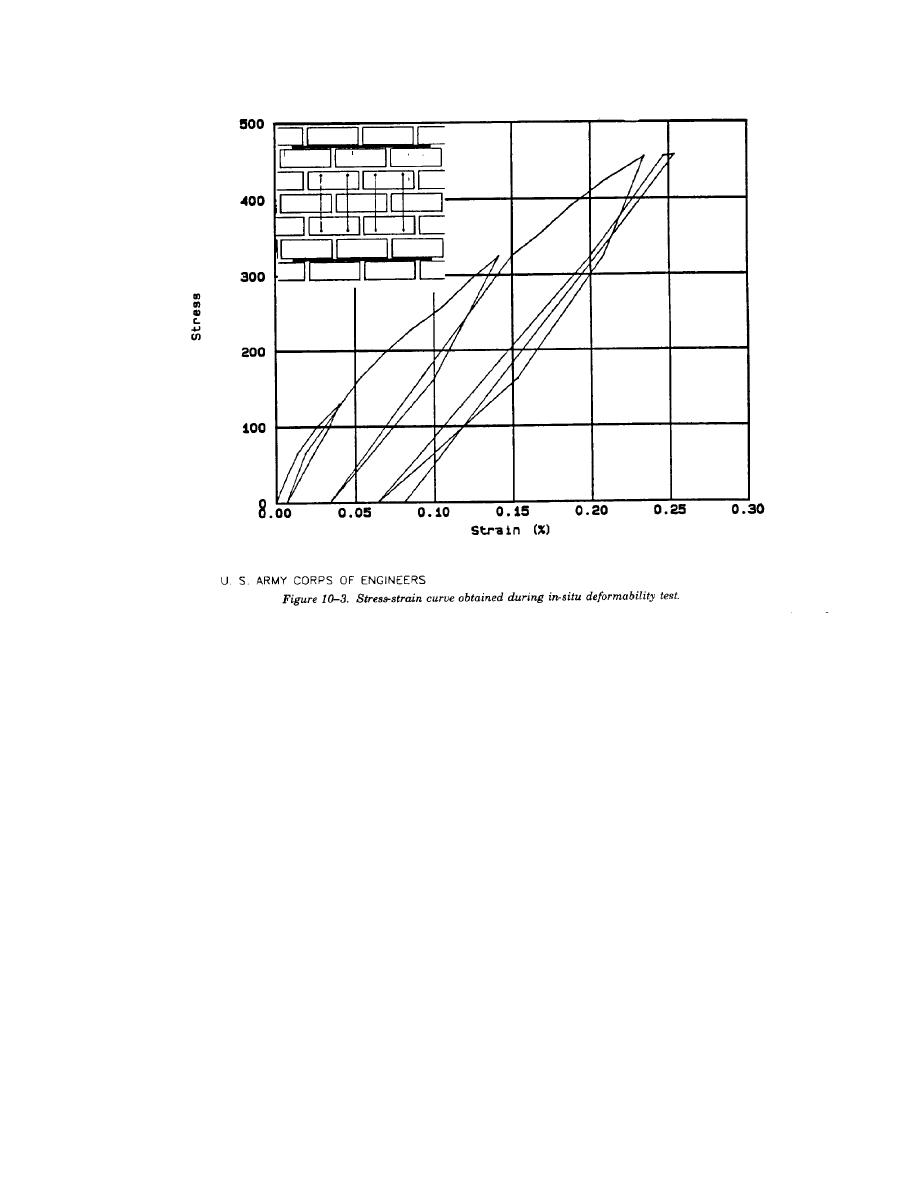
TM 5-809-3/NAVFAC DM-2.9/AFM 88-3, Chap. 3
may be easily integrated into the structural
the test is contained in the ABK Methodology for
evaluation process and provide data that is compli-
Mitigation of Seismic Hazards in Existing Unrein-
mentary to other NDE tests. Data concerning the
forced Masonry Buildings. This shear test is the
states of stress at various points throughout the
best currently available for measuring in-situ bed
structure may be very helpful in the interpretation
joint shear strength in existing masonry walls,
of data from the in-place shear test and both
however, several unknowns still must be accounted
ultrasonic and mechanical pulse tests. Data on the
for by assumptions. The assumptions include, the
elastic modulus and strength of masonry obtained
definition of joint failure, the effect of normal load
from the two-flatjack test may be used for correla-
on the measured shear stress, the magnitude of the
tion to Schmidt Hammer or pulse velocity tests.
normal load on the tested joint, the contribution of
c. In-situ shear test. The in-place shear test,
the collar joint, the variability of the masonry due
often called the push test, is designed to measure
to workmanship in the original construction, and
the in-situ joint shear resistance between masonry
the correlation of the results to full-scale wall
units and mortar joints. It requires the removal of
behavior. Each of these assumptions may introduce
a single masonry unit and a head joint on opposite
an element of inaccuracy into the determination of
sides of a test unit. The test unit is then displaced
the available shear resistance of an existing
horizontally relative to the surrounding masonry
masonry wall. These inaccuracies need to be
using a hydraulic jack and the horizontal force
considered if a more reliable method of determining
required to cause the first movement of the test unit
the shear strength is to be obtained.
(2) Modified test. A modified technique for
is recorded. The test may be considered
nondestructive, because the removed unit and
conducting the in-place shear test has been devel-
mortar joints may be replaced to their former
oped which addresses many of these assumptions
appearance.
and appears to give reliable results. In the modified
(1) Existing test. The test procedure, as de-
test, the vertical stress in the wall at the test unit is
scribed in the model codes, is not very specific
measured directly using the single flatjack test. The
about the details of the test and about the analysis
normal stress is then controlled during the shear
of the test data. A more complete description of
test by flatjacks above and below the test unit. The
10-5


 Previous Page
Previous Page
